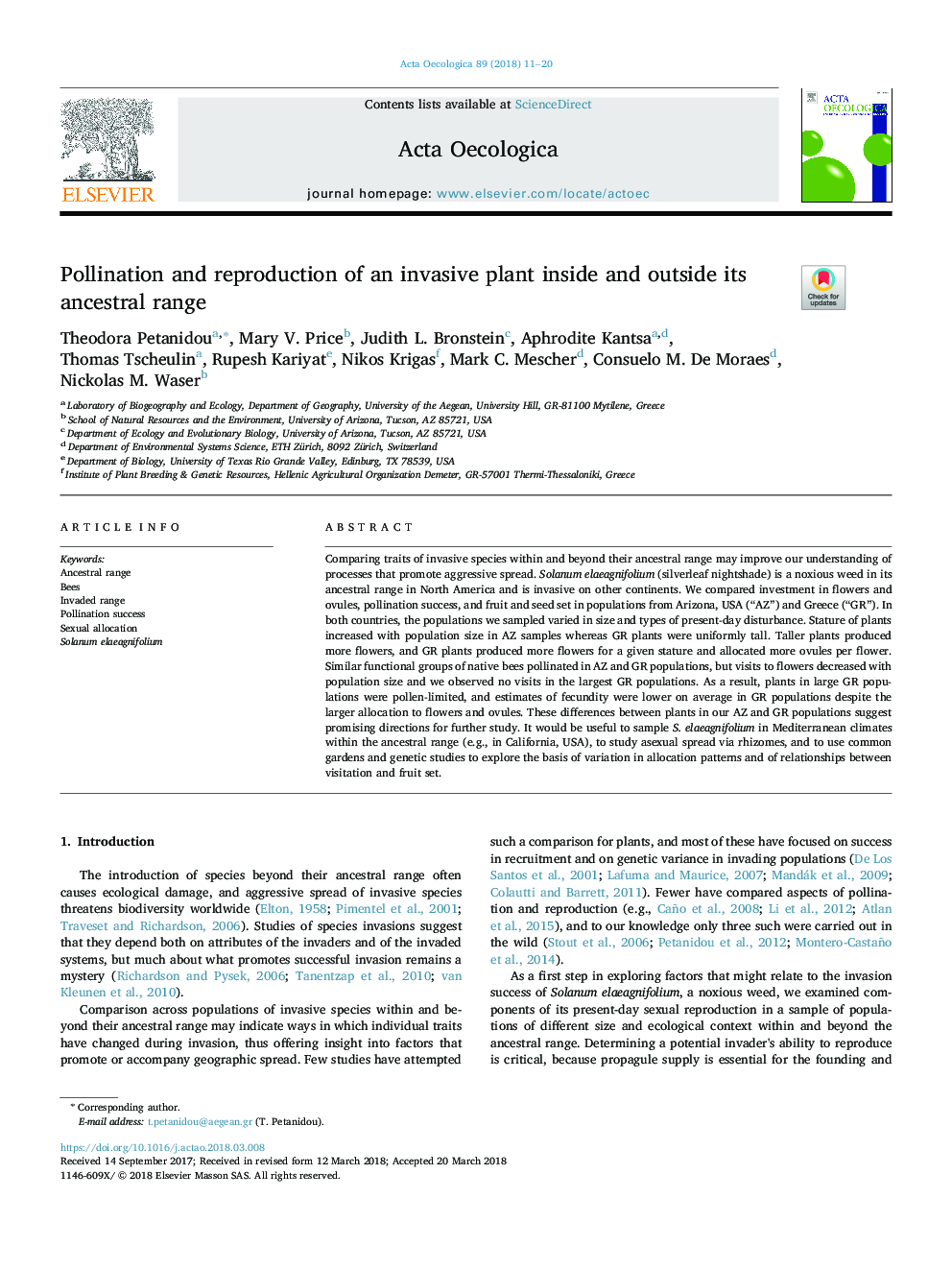| Article ID | Journal | Published Year | Pages | File Type |
|---|---|---|---|---|
| 8846500 | Acta Oecologica | 2018 | 10 Pages |
Abstract
Comparing traits of invasive species within and beyond their ancestral range may improve our understanding of processes that promote aggressive spread. Solanum elaeagnifolium (silverleaf nightshade) is a noxious weed in its ancestral range in North America and is invasive on other continents. We compared investment in flowers and ovules, pollination success, and fruit and seed set in populations from Arizona, USA (“AZ”) and Greece (“GR”). In both countries, the populations we sampled varied in size and types of present-day disturbance. Stature of plants increased with population size in AZ samples whereas GR plants were uniformly tall. Taller plants produced more flowers, and GR plants produced more flowers for a given stature and allocated more ovules per flower. Similar functional groups of native bees pollinated in AZ and GR populations, but visits to flowers decreased with population size and we observed no visits in the largest GR populations. As a result, plants in large GR populations were pollen-limited, and estimates of fecundity were lower on average in GR populations despite the larger allocation to flowers and ovules. These differences between plants in our AZ and GR populations suggest promising directions for further study. It would be useful to sample S. elaeagnifolium in Mediterranean climates within the ancestral range (e.g., in California, USA), to study asexual spread via rhizomes, and to use common gardens and genetic studies to explore the basis of variation in allocation patterns and of relationships between visitation and fruit set.
Related Topics
Life Sciences
Agricultural and Biological Sciences
Ecology, Evolution, Behavior and Systematics
Authors
Theodora Petanidou, Mary V. Price, Judith L. Bronstein, Aphrodite Kantsa, Thomas Tscheulin, Rupesh Kariyat, Nikos Krigas, Mark C. Mescher, Consuelo M. De Moraes, Nickolas M. Waser,
